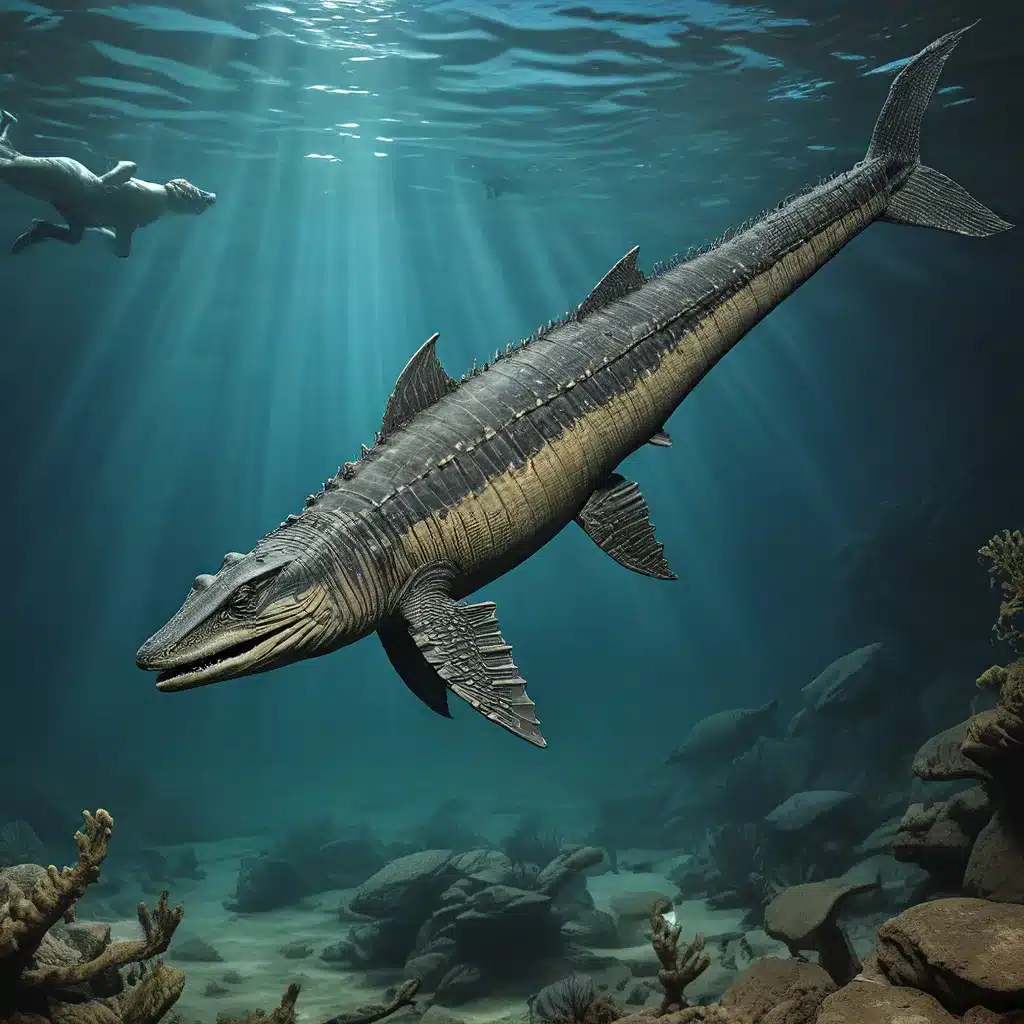
In the vast expanse of the ancient oceans, a remarkable creature once reigned supreme. The Ichthyosaur, a marine reptile that thrived alongside the dinosaurs, was an evolutionary marvel, seamlessly adapting to the ever-changing aquatic environment. This captivating species, which name translates to “fish lizard,” has long captured the imagination of scientists, scholars, and enthusiasts alike, as they unravel the mysteries of its existence and the insights it offers into the past.
Uncovering the Ichthyosaur’s Mysterious Origins
The story of the Ichthyosaur begins with its enigmatic origins, which have been the subject of extensive research and debate among paleontologists. These marine reptiles first emerged during the Triassic period, approximately 250 million years ago, and quickly established themselves as dominant predators in the oceans. Unlike their terrestrial counterparts, the Ichthyosaurs possessed a remarkable ability to adapt to the aquatic realm, evolving a sleek, streamlined body and powerful fins that propelled them through the water with unparalleled speed and agility.
Ichthyosaurs were not true dinosaurs, but rather a distinct group of marine reptiles that shared certain evolutionary traits with both reptiles and mammals. Their unique skeletal structure, with a combination of reptilian and mammalian features, has led scientists to believe that they descended from a group of land-dwelling reptiles that returned to the sea, a phenomenon known as the “secondary adaptation to an aquatic lifestyle.”
Revealing the Ichthyosaur’s Aquatic Dominance
One of the most remarkable aspects of the Ichthyosaur was its remarkable adaptation to the aquatic environment. Unlike their land-dwelling counterparts, these marine reptiles possessed a number of unique features that allowed them to thrive in the ocean:
- Streamlined Body Shape: The Ichthyosaur’s sleek, hydrodynamic body shape, with a pointed snout and powerful tail, enabled them to move swiftly through the water, making them formidable predators.
- Flipper-like Limbs: Instead of the traditional reptilian limbs, Ichthyosaurs evolved flipper-like appendages that provided powerful propulsion and maneuvering capabilities in the water.
- Powerful Jaws and Teeth: These marine reptiles were equipped with strong, sharp teeth and powerful jaws, allowing them to capture and consume a variety of prey, from fish to smaller marine reptiles.
- Efficient Breathing Mechanism: Ichthyosaurs possessed a unique respiratory system that enabled them to remain submerged for extended periods, making them skilled hunters and efficient navigators of the oceanic depths.
Recent studies have also revealed that Ichthyosaurs may have been susceptible to a condition similar to the “bends” experienced by modern-day scuba divers, a result of their ability to dive to great depths in search of prey. This discovery has provided valuable insights into the physiological adaptations of these remarkable creatures and the challenges they faced in the marine environment.
The Ichthyosaur’s Reign and Eventual Demise
The Ichthyosaur’s reign as the dominant predator of the ancient oceans spanned millions of years, from the Triassic period to the Late Cretaceous period, when they ultimately met their demise. During this time, these marine reptiles diversified and evolved into a variety of species, each with its own unique adaptations and hunting strategies.
One of the most remarkable aspects of the Ichthyosaur’s history is the sheer number of fossils that have been discovered around the world. From the shores of California to the remote regions of Antarctica, the remains of these ancient creatures have been unearthed, providing a wealth of information about their biology, behavior, and the environments in which they thrived.
The Lost Kingdoms website offers a fascinating glimpse into the world of the Ichthyosaur, with detailed information on the latest archaeological discoveries and the ongoing efforts to unravel the mysteries of these remarkable marine reptiles.
Unlocking the Secrets of the Ichthyosaur
As our understanding of the Ichthyosaur continues to evolve, researchers and enthusiasts alike are uncovering new insights into the lives and legacy of these ancient creatures. From the analysis of their fossilized remains to the study of their evolutionary adaptations, the Ichthyosaur has become a symbol of the incredible diversity and resilience of life on our planet.
One of the most exciting developments in the study of the Ichthyosaur is the increasing use of advanced technology, such as 3D scanning and computer modeling, to create detailed reconstructions of these marine reptiles. These innovative techniques have allowed scientists to gain a deeper understanding of the Ichthyosaur’s anatomy, physiology, and even their behavior, shedding new light on their role in the ancient aquatic ecosystems.
Furthermore, the discovery of well-preserved Ichthyosaur fossils, such as those found in Chile and California, has provided a unique window into the lives of these remarkable creatures. These fossils have revealed insights into the Ichthyosaur’s social structures, feeding habits, and even their reproductive strategies, offering a glimpse into the complex and diverse world of these ancient marine reptiles.
Conclusion: Honoring the Ichthyosaur’s Legacy
The Ichthyosaur’s story is one of resilience, adaptation, and the enduring fascination of the human mind with the mysteries of the past. As we continue to uncover the secrets of these remarkable creatures, we gain a deeper appreciation for the richness and complexity of the natural world, both past and present.
Through the study of the Ichthyosaur and other ancient species, we are not only expanding our knowledge of the past but also gaining insights that can inform our understanding of the present and future. By piecing together the fragments of these ancient lives, we are able to paint a more complete picture of the evolution of life on our planet, and to better comprehend the delicate balance that sustains the natural world.
As we dive deeper into the aquatic world of the Ichthyosaur, let us be reminded of the countless wonders that still await discovery, and the endless possibilities for unlocking the secrets of our shared past. For in doing so, we not only honor the legacy of these remarkable creatures but also nurture our own curiosity and wonder about the world we inhabit.


